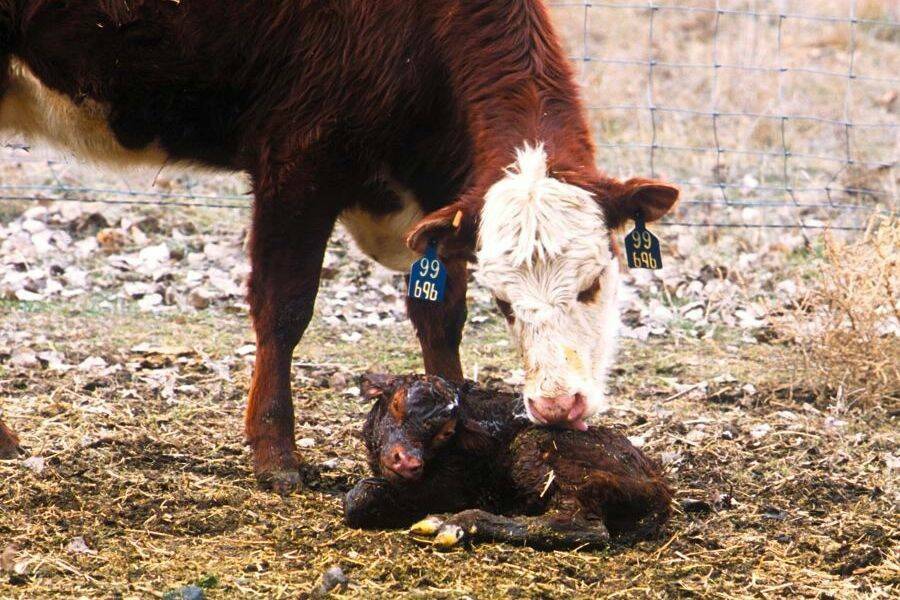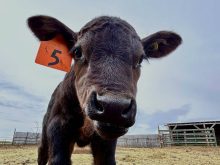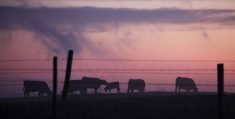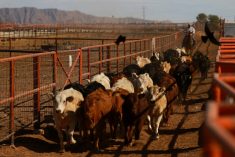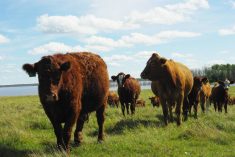Glacier FarmMedia – Managing replacement heifers is often challenging, but maybe more so today in a market boasting record prices for heifers and calves and all other cattle classifications.
One question cow-calf producers are asking is, “should I separate calves for replacement heifer development or sell them at a premium?” In either case, opportunity costs rear their head.
Rather than advising producers on this question and others, the Canadian Cow-Calf Cost of Production (COP) Network is offering them baseline numbers — and objective facts based on those numbers — to consider when making their replacement heifer decisions.
Read Also
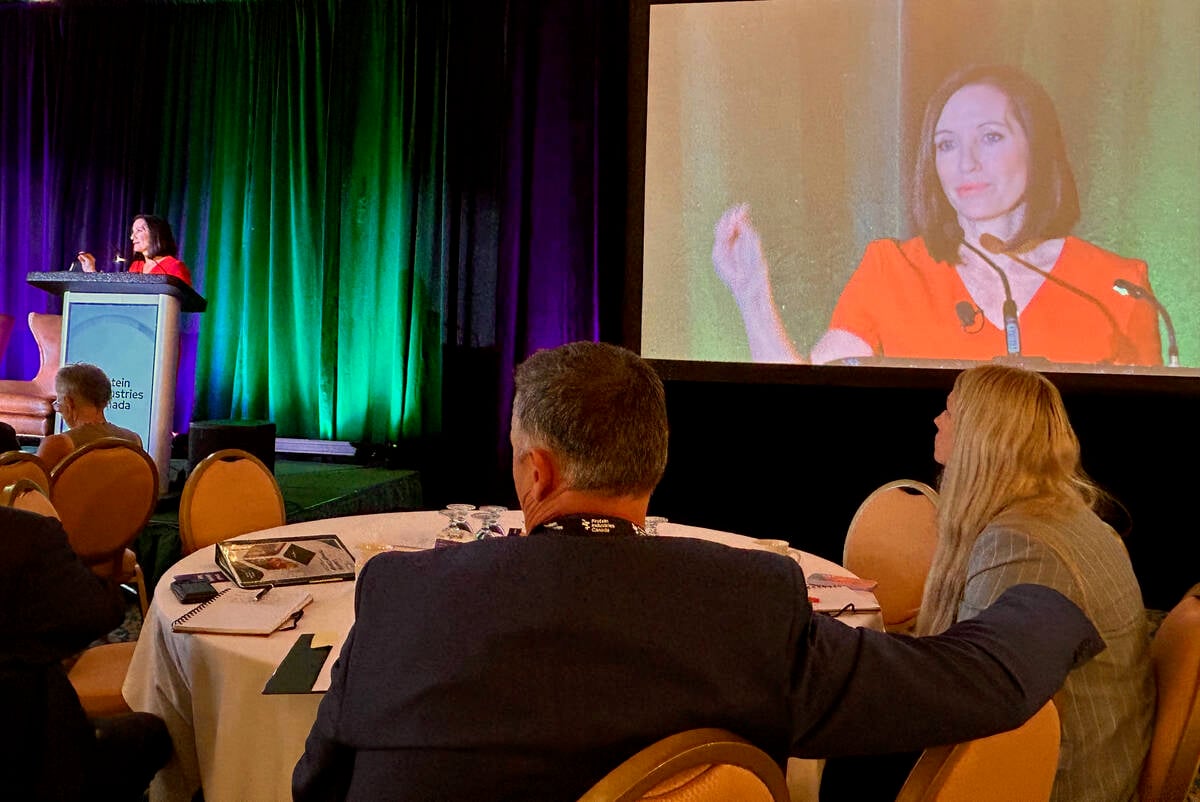
Canada told trade crisis solutions in its hands
Canadians and Canadian exporters need to accept that the old rules of trade are over, and open access to the U.S. market may also be over, says the chief financial correspondent for CTV News.
With data assembled in the Cost of Raising Replacement Heifers document, the COP Network runs through data on costs, payback periods and whole herd perspectives from its 2023 survey (the latest from which data is available) to help producers weigh the long-term impact of raising heifers.
The COP Network took four main takeaways from the survey:
- Raising replacement heifers is a significant investment with long-term implications for profitability.
- The forgone revenue from not selling calves is a substantial opportunity cost of retaining heifers for replacement.
- The payback period of replacement heifers varies widely depending on cost structure, market condition and cow longevity.
- Effective cost control and efficient management are essential for optimizing replacement strategies and maximizing profitability.
“As replacement heifers represent a major cost for cow-calf producers, choosing a herd replacement strategy has important implications on cow-calf profitability,” wrote Brenna Grant, executive director of Canfax, in an email.
Canfax — a source for Canadian cattle market information — is among several industry partners in the COP Network. The Beef Cattle Resource Council funds the initiative.
Beef producers should be aware of factors both within and outside their control in order to develop their own cost structures, says Grant.
“As producers are looking to restock following drought liquidation, there are things that are outside the control of producers (the opportunity cost of selling heifer calves is 60 per cent of total cost) and things within their control (development costs = 40 per cent of total costs, replacement rates).
“Producers who are aware of their own cost structure can make informed decisions on what is best for their operation this year — recognizing it might be different than last year.”
The survey analyzed the costs of raising replacement heifers from weaning until pregnancy check in the fall of the following year, covering approximately 12 months, including one winter feeding and a summer grazing period.
The data was derived from 63 benchmark farms participating in the network. The survey measured opportunity, feed, input, land and labour costs as well as other factors including insurance, taxes and conception rates.
Based on that data, the network estimated the cost of raising replacement heifers in 2023 at an average of $2,904 per heifer, with figures ranging from $1,905 to $3,806. It’s a large jump from 2022, when the cost was $2,319.
Some metrics took a bigger bite out of the cost of production than others.
“Notably, the forgone revenue from not selling the calf at weaning accounts for 60 per cent of the total costs, with other major expenses tied to labour and essential inputs linked to feed production and land,” the report said.
When purchasing replacement heifers, producers should consider the economic value of replacements entering the herd, wrote Grant.
“The value of a bred heifer can be indicated by its net present value (NPV), which is the sum of future cash flows in current value dollars.
“It is affected not only by cash costs like annual maintenance and economic factors like salvage value and calf prices, but also by productivity factors such as reproductive lifespan and weaning weight.”
Tools ae available for producers to determine the NPV of an animal. BCRC’s replacement heifer calculator is one of several.
Producers need to know their total replacement costs, which depend on both the cost of raising each replacement heifer and the overall replacement rate.
For the benchmark farms, replacement cost accounted for an average eight per cent of total herd costs in 2023. By distributing the cost of all replacement heifers across the entire cow herd, the surveyors estimated the average replacement cost per cow at $139 with a range from $50 to $272.
“Farms with higher replacement rates can still lower costs through efficient management,” said the report.
“Effective cost control is crucial to optimizing herd replacement strategies.”
How long it takes to pay off a replacement heifer is always a serious consideration for producers.
According to the report, the payback period to recoup the initial investment on a replacement heifer varies greatly and, again, depends on efficiency.
To calculate the number of years of payback for the benchmark farms, the data was split into three heifer cost groups — low, medium and high — based on the total cost of raising a replacement heifer. There were 21 benchmark farms in each group.
The low group’s costs averaged $2,382 per heifer, the medium group $2,907 per heifer and the high group $3,422. All three figures are notably higher than the 2019-23 five-year averages, which are $866 for the low group, $1,028 for the medium group and $1,358 for the high group.
Assuming calf prices increase 25 per cent from the 2015-23 average over the next 10 years, low-cost farms would require five consecutive productive years to recoup their initial investment for heifers retained in 2023. Medium-cost farms would take seven years under the same criteria.
“However, high-cost farms are unlikely to recover their initial investment within the heifer’s productive lifespan,” said the report.
Added Grant: “This shows how replacement heifers impact whole-farm profitability and economic viability of the operation. Paying too much during high prices live on the farm’s annual cost of production for years to come. Having a sharp pencil can be the difference between profits and not down the road.”
Grant further explained the concept of the benchmarks.
“The low-cost group had lower replacement rates, meaning they needed less head to keep the herd steady. They also had lower development costs. This combination helped them keep overall costs down.”
Grant said the survey takeaways summarize the importance of choosing a herd replacement strategy and deciding on the right tradeoffs for a producer’s operation.
Although many producers raise replacement heifers on-farm, she says buying replacement heifers could cost less, depending on the production cost of the operation and current market situation.
Both growing and buying replacement heifers come with their own pros and cons.
“Producers currently face tradeoffs between rebuilding slower with (their) own genetics, matching forage supply with animal numbers, compared with purchasing heifers, which rebuilds faster supporting economies of scale and profitability but also represents risks of genetics not suiting environment or management style.”
The COP survey measured the cost of raising replacement heifers in detail, but the actual cost of the animals was not part of its scope.
However, a recent Glacier FarmMedia story found western Canadian auctioneers selling replacement heifers for more than $3,000 per head — approximately double the prices they were going for in recent years.
Auctioneer Tyler Slawinski said 800 to 900 pound replacement heifers are selling for $3,200 to $3,600 a head at the Gladstone Auction Market in western Manitoba.
Although these high prices may be discouraging to producers still rebuilding their herds after years of drought, many are approaching high replacement heifer prices strategically, said Bryan Danard of Calgary Stockyards.
“What we’re seeing now is that feeder cattle are so high, a lot of guys that normally turn out yearlings on grass, rather than just turning out straight yearlings, (they) are buying replacement heifers to breed and sell into the bred market this fall, just because it worked so well last year,” he said.
The Cost of Raising Replacement Heifers report can be found on the Canfax website, here.




